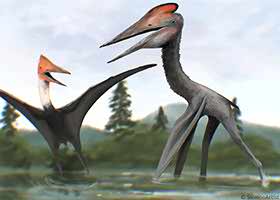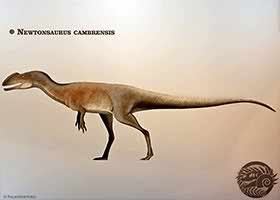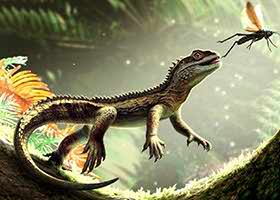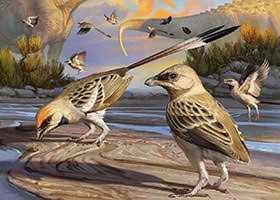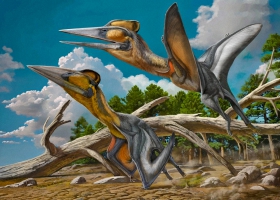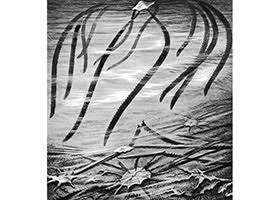
Trace fossils provide a unique window into the hidden activities of ancient life, capturing behaviors rather than body shapes. Unlike body fossils, therefore, these records preserve movement, feeding, and dwelling traces left in sediments. This article explores bioturbation, bioerosion, bioclaustration, tiering, and the diverse structures—burrows, borings, trails, and more—that reveal life’s silent signatures in stone.
Bioturbation refers to the disturbance, mixing, and reworking of soils and sediments by living organisms. Such traces of the activity of fossil organisms, for instance, lead to the disruption of previously existing sedimentary layers recorded in rocks or deposits. Scientists call them biogenic structures.

The process of bioturbation significantly alters the physical and chemical properties of deposits, exerting various effects on the surrounding environment. Consequently, bioturbation has become a subject of interest in ichnology, which studies trace fossils and the activities of organisms in sedimentary environments.
This concept does not include traces resulting from passive contact between an organism’s body and the sediment (i.e., impressions).
The dominant bioturbators are small invertebrates, although the impact of vertebrate animals is often more conspicuous.
Cryptoturbation.Reworking of sediment by minute organisms living between the clasts of the substrate. However, cryptoturbation is generally not visible macroscopically in the rock.


Bioerosion is the mechanical or biochemical destruction of hard substrates (such as rocks, shells, wood, and other surfaces) by living organisms (including borings, grazings, bites, scratches, etc.). For example, algae, fungi, bacteria, mollusks, polychaete worms, phoronids, sponges, crustaceans, sea urchins, and fish can cause it. Bioerosional trace fossils are any structures created by a bioeroder on the surface or inside a hard substrate. Additionally, on land, bioerosion is caused by plant roots and lichens. Fossil records show that bioerosion occurred as early as the Precambrian.

Bioclaustration. In ichnology, this refers to an interaction in which one organism (usually soft-bodied) penetrates into the hard (skeletal) part of another living organism. This can represent either symbiosis or parasitism. Bioclaustration is considered a type of boring.
Some General Terms Related to Invertebrate Ichnology
Organisms that leave traces on substrates fall into two groups:

Infaunal organisms live within sediments, burrowing into the ground. The term “infauna” refers to aquatic animals that live in the substrate of a water body and are especially common in soft sediments. Organisms that adopted an infaunal lifestyle therefore more often appear in life position because sediment already partially buries them.
Epifaunal organisms, on the other hand, live on the surface of sediments or other surfaces, including attached organisms.

Bioglyph—traces or imprints left by the appendages or movements of an organism.

Tiering—the vertical distribution of traces of biological activity at different depths within the substrate. The main ichnotaxa involved in sediment reworking each have a characteristic depth distribution in the sediment.
According to an approximate scheme, snails, bivalves, and similar organisms inhabit the uppermost tier of loose or soft sediments. Characteristic ichnofossils in this layer include the ichnogenera Planolites, Asteriacites, Cruziana, Curvolithus, and others.
Deeper in the sediment (typically at about 10 cm below the seafloor), horizontal, irregular tunnel networks of the ichnogenus Thalassinoides predominate.
The fan-shaped traces of the ichnogenus Zoophycos characterize an even deeper tier.
Finally, the thin, radially branching tunnels of the ichnogenus Chondrites usually reach the greatest depths of sediment penetration.
Beyond Footprints: The Diversity of Trace Fossils
Trace fossils, also known as ichnofossils, are not limited to just footprints. Instead, they encompass a wide range of preserved evidence of past life activities, such as burrows, trails, nests, and resting and feeding tracks.
The following terms collectively describe the interactions of invertebrates with their environments as preserved in trace fossils.
Burrows

Burrows (digging traces) are tunnels or cavities created by animals for dwelling, shelter, feeding, or reproduction. Organisms such as worms, mollusks, and crabs often make burrows in sedimentary rocks. However, vertebrate animals also dig burrows. For instance, fossilized burrows from lungfish and the extinct beaver Palaeocastor provide examples of such structures.
A burrow is a biogenic sedimentary structure completely enclosed within a soft substrate, meaning the sediment was pliable when the burrow was constructed. Scientists consider traces in softground and firmground to be burrows, while they classify traces in hardground as borings.
The oldest burrow traces date back to the Ediacaran (Vendian) period, around 560 million years ago. These horizontal burrows were located just below the seafloor surface, where the burrowing organisms fed.
Vertical burrows such as Skolithos also appear in the fossil record since the Cambrian.

Boxwork is a complex network of burrows arranged in multiple planes. An example is found in Thalassinoides.
Maze. A network of burrows arranged on a single plane. It forms a system of winding, intertwined patterns created by organisms moving along a complex but flat path.
Gallery. An enlarged part of a burrow system used for activities such as dwelling, mating, or storage.


Lining. Material added by the organism to the walls of the burrow, usually granules or other secretions.

Daimonelix. “Devil’s corkscrews.” The burrowing beaver Palaeocastor created these spiral-shaped burrows, which appear in the Oligocene and Miocene of North America. The Harrison Formation (Arikaree Group) in western Nebraska and eastern Wyoming contains the highest concentrations of these fossils. The burrow depth reaches 2 m, and the length of the lower chambers can reach up to 4.5 m. The base of the spiral part merges with a subhorizontal tunnel. The spiral shape of the burrow helped create suitable humidity and temperature conditions. These burrows are most frequently associated with the species Palaeocastor fossor.

Skolithos. The name means “worm of the rock.” These simple, unbranched burrows consist of densely packed, approximately vertical cylindrical straight tubes. They have a circular horizontal cross-section, and their walls can be smooth or annulated. Some worm-like organism presumably created them. They can reach lengths up to 35 cm and diameters from 0.2 to 4 cm. These formations, prevalent in sands and sandstones worldwide, primarily originated in shallow marine environments, dating back to the Early Cambrian period, approximately 542–488 million years ago. Additionally, there are also reports of their occurrence in freshwater lake sediments and alluvial deposits of braided rivers. Skolithos burrows formed shortly after sediment deposition.
Vertical burrows (e.g., Diplocraterion) appear in the Early Cambrian. Since the Cambrian, furthermore, we’ve also known about irregular branching burrows, like Arachnostega, in shell infills (sediment that fills shells).

Chondrites (not to be confused with the stony meteorites of the same name) are Fodinichnia with a repetitive pattern. They consist of small, regularly branching burrows of uniform diameter, outwardly resembling plant roots. The tunnels of Chondrites do not touch or intersect one another. The burrow diameter is consistent within a single system (0.1–10 mm). Their makers include vermiform deposit feeders (such as nematodes (roundworms) or sipunculids), asymbiotic bivalves, and chemosymbiotic bivalves. Chondrites appear in marine deposits dating back to the Cambrian period of the Paleozoic. They are especially common in sediments deposited in low-oxygen environments.

Oikobesalon is an unbranched, elongated, straight burrow with a single entrance and a rounded cross-section, created by terebellid polychaete worms in originally soft substrate. A thin, mineralized layer lines these burrows, and it has a transverse ornamentation in the form of spindle-shaped rings. The earliest traces of Oikobesalon are of Cambrian or Ordovician (Darriwilian) origin from the Baltic.

Thalassinoides is a three-dimensional burrow system that originated in the Cambrian period and has since become extremely common in rocks globally, especially from the Jurassic period onward. These burrows are repeatedly dichotomously (Y-shaped) or T-shaped branched, with small swellings at the junctions of the tubes. The burrows are cylindrical with smooth walls and range from 2 to 5 cm in diameter. Thalassinoides sometimes contain scratches, fecal pellets, or remains of the crustaceans that created them.
The number of Thalassinoides findings increased significantly at the beginning of the Mesozoic. Such burrows result from the activity of various organisms, including the sea anemone Cerianthus, Balanoglossus, and fishes. Decapod crustaceans of the infraorder Thalassinidea, however, produce most of them. They belong to dwelling traces (Domichnia). They are characteristic of mid-depth shelf deposits.

Arenicolites. Simple U-shaped burrows represent this ichnogenus without connecting spreiten (reworked material) between the limbs. The spacing between the limbs can be up to 5 cm, and the shaft/tunnel diameter is 3–5 mm. The structure can be a few centimeters tall, but erosion may have reduced its size, indicating that it was likely larger in its original form. Arenicolites represent the dwelling burrows of suspension-feeding or predatory animals, like annelid worms or crustaceans.They occur in shallow marine, deep-water, and non-marine deposits. Early Cambrian to present.
Borings

Right: A bryozoan colony from Hirmuse Creek, Sandbian, Late Ordovician, Estonia. (Os)—Osprioneides kampto borings, Tr—Trypanites (or Palaeosabella) borings. © Vinn, Wilson, Mõtus
Borings (bioerosion traces) are holes created by organisms that penetrate hard substrates such as shells, bones, wood, or rocks. Burrowing into the soft tissues of another organism (for example, leaf or wood mines made by insects) is also considered a type of boring. Boring can be mechanical or chemical. The creators of borings are highly diverse—ranging from foraminifera and various invertebrates to fish, birds, and other vertebrates.

Entobia—fossilized traces of borings in hard substrates (usually in shells, rocks, or hardgrounds composed of calcium carbonate). Endolithic clionid sponges are typically responsible for forming these borings. They consist of a branching network of galleries, often with regular swellings called chambers, connected by canals. The fossil ranges from the Devonian to the Recent.

Gastrochaenolites are club-shaped (or drop-shaped) borings in shells, rocks, or hard calcareous substrates, created by bioeroding bivalve mollusks such as Lithophaga and Gastrochaena. Boring organisms also perforated trilobite exoskeletons and brachiopod shells. The main chamber is wider than the entrance and may be subspherical, elliptical, or elongated. The entrance opening is round, oval, or dumbbell-shaped. Gastrochaenolites fossils appear in the Ordovician and became widespread from the Jurassic to the present.Synonyms include Moniopterus, Paleolithophaga, and Paleolithopholas.

Petroxestes are shallow, elongated grooves or slit-shaped structures formed by mytilacean bivalves (likely Corallidomus) in carbonate hard substrates. They are known from the Early Silurian of Anticosti Island (Canada), the Upper Ordovician (Ohio, USA), and other locations.

Burrinjuckia is a form of bioclaustration. Burrinjuckia grows as an internal outgrowth within a host brachiopod’s shell. It has a hollow inner part in the mantle cavity, an elongated sac-like body, and a short tubular neck with a subcircular opening.
The total length of the bioclaustration is 2.3 mm. The external diameter of the opening is about 1.0 mm. There is an annular thickening around the opening. Burrinjuckia was probably a parasite. It existed from the Late Ordovician (northern Estonia) to the Devonian.

Tremichnus is an embedded structure, a type of bioclaustration, created when an organism suppresses the growth of its echinoderm host’s porous skeleton, typically crinoids. The opening is round or elliptical, nonpenetrative, and usually has a wide, high, raised central protrusion. Tremichnus is the most common endobiotic symbiont of Paleozoic crinoids. Family Centrichnidae.

Trypanites are narrow, elongated, unbranched cylindrical or subcylindrical borings in calcareous substrates such as shells, hard carbonate rocks (biostromes, reefs), and limestone. They have a circular cross-section along their entire length. They can be straight, curved, or irregular. Their length can be up to 50 times their width. Various types of worms and sipunculids usually create them. Some Ordovician specimens contain scolecodonts, suggesting that polychaetes produced the borings. Trypanites originate in the Early Cambrian, occur very rarely in Middle and Late Cambrian deposits, and are widespread from the Early Ordovician to the present.

Anoigmaichnus is a bioclaustration. The openings are perpendicular or inclined (up to 45°) to the growth surface of the hosts; they range in shape from conical to cylindrical longitudinally. The cross-section is round or oval. Their entrances are elevated above the host’s growth surface. It occurs in Middle Ordovician bryozoans from Osmussaar Island, Estonia. Anoigmaichnus is apparently a junior synonym of Trypanites.
Encrustation

Encrustation refers to the settlement of certain sessile organisms that require a hard surface for growth. They colonize the surface of shells (which can happen while the shell-bearing organism is still alive), bones, or rocks, leaving marks or depressions on their surfaces. Such organisms are usually sponges, bryozoans, tubeworms, and barnacles (cirripedes).
Bioimmuration

Bioimmuration is a natural process that creates fossil-like impressions when one organism grows over another and later preserves its shape. To illustrate, imagine how barnacles cling to the hull of a boat—if the boat were to decay away, the barnacles would retain an imprint of the wood’s texture on their base. This phenomenon occurs in nature with various encrusting organisms, such as corals, brachiopods, and sponges, which attach themselves to hard surfaces like shells, rocks, or even other creatures.
Bioimmuration as a form of external mold happens when the original hard substrate dissolves or disappears; in this case, the encrusting layers remain, preserving a detailed record of past ecosystems.
Trails

Trails: These are markings left on the sediment surface by moving animals, such as worms, arthropods, or parts of vertebrate bodies (abdomens, tails). They are usually continuous grooves formed during sliding or slithering. Trails provide information about the movement patterns of the animal.

Climactichnites—this is the name for surface trails and burrows consisting of a series of chevron-shaped raised transverse ridges, typically bordered on both sides by parallel crests. They somewhat resemble tire tracks and are larger (typically about 2 to 30 cm wide) than most other invertebrate fossil traces.
Organisms created these trails on sandy tidal flats during the Cambrian period. A large slug-like animal (up to 70 cm in length) may have created them—its traces formed as it crawled over wet sand, reworking it while searching for food. A muscular foot, very similar to that of modern gastropods, accomplished movement. The ichnogenus Climactichnites is a fascinating example of trace fossils that showcases both burrowing and movement behaviors. It occurs only in North America and classifies under the group known as Repichnia.

Protichnites consists of two rows of limb tracks and a medial groove between them. An arthropod made the footprints with its walking limbs, and its dragging tail formed the linear groove (which may be discontinuous). Protichnites traces typically appeared on the tidal flats of Paleozoic seas. While similar traces exist in the Cenozoic, scientists rarely call them Protichnites.
Protichnites are among the oldest known traces on land, and paleontologists have discovered them in tidal and supratidal environments of the Cambrian period. Some creators of these traces were extinct arthropods, such as euthycarcinoids Mosineia macnaughtoni and Mictomerus melochevillensis.
Nests

Nests: These are structures built by animals for laying eggs or raising offspring. They represent a biogenic structure, usually containing a clutch. In some cases, a raised area marks the boundary of the nest, which may appear as a bowl-shaped depression. Fossil nests allow us to infer information about the reproduction and parental care of ancient organisms. The discovery of Maiasaura dinosaur nests helped reveal that dinosaurs behaved more like birds than most reptiles. An example: Calichnia.
Feeding Trace Fossils

Feeding traces: These include marks left by animals during feeding, such as bite marks on bones, shells, or plant material. Both invertebrates (snails, mollusks, sea urchins) and vertebrates (sharks, mosasaurs, predatory dinosaurs, hyenas, bears, and others) often leave such traces.
This category also includes the ethological class Fodinichnia, which encompasses burrow traces made by deposit-feeding organisms.

Cruziana—sinuous feeding traces left on the sea floor, characterized by a bilobed structure with a central furrow. Scratch marks from the limbs of the excavating organism, typically a trilobite or a related arthropod, cover the lobes of this structure. The traces range from 0.5 to 8 cm wide and can be up to 1 m long, though they are typically 10–20 cm in length. Cruziana are most common in mid-depth marine deposits formed during the Paleozoic era, especially in rocks of Cambrian and Ordovician age. Importantly, these represent feeding traces, not evidence of locomotion. Scientists have identified more than 30 Cruziana ichnospecies.
Trilobites produced Cruziana up until the end of the Permian. After the Permo-Triassic extinction, however, other marine and freshwater arthropods produced Cruziana. See also Isopodichnus (junior synonym).

Halopoa—long, usually horizontal, unbranched burrows covered with more or less distinct longitudinal, irregular, overlapping wrinkles, ridges, or grooves of various sizes. Their cross-sectional diameter ranges from 2 to 8 mm. The specimens often have short and steep branches, and the ridges intersect and interpenetrate. These burrows appear on the soles of turbiditic sandstone beds. Deposit-feeding organisms, such as marine worms, may have produced these. They have a long geological range, from the Cambrian to the present.
Resting Trace Fossils

Resting Traces. Imprints of bodies or body parts of animals when they have not moved but have stayed in one place. These resting traces may also include impressions of shells or scales.

Asteriacites are five-rayed fossil resting traces left by sea stars and ophiuroids on the sea floor. Since the Ordovician, they appear in European and American strata and are especially abundant in Triassic and Jurassic deposits. Clusters of Asteriacites indicate low bioturbation intensity, high sedimentation rates, shallow burial, and low predator pressure. Synonyms: Heliophycus, Spongaster.

Rusophycus—bilobed “resting traces” associated with trilobites and other arthropods, such as horseshoe crabs. They occur at the beginning or end of a Cruziana trace. The lobes are parallel or sometimes merge at the rear. Rusophycus can indicate the approximate number of legs the trace maker had, although scratch marks from a single leg may overlap or repeat. They could reach lengths of up to 35 cm and widths of 21 cm.
Rusophycus have been found from the earliest Cambrian—with some examples even predating trilobite fossils—and also in the Triassic, following the Permian extinction of trilobites. This broad temporal range suggests that organisms other than trilobites might also have created similar traces. Rusophycus typically occurs in the Cruziana ichnofacies.
Interpretation: Cubichnia, praedichnia, or fodinichnia.
Taphoglyphs

Taphoglyphs—passive impressions (depressions) in sediment left by the entire body or body parts of deceased animals. They usually form as molds on the undersides of sandstone or siltstone beds.
See also the ethological class Mortichnia.
Fossilized Digestive Remains

Bromalites are fossilized remains composed of substances originating from the digestive tract of ancient organisms. These include ingested and partially digested substances that were eventually expelled or regurgitated. Types of bromalites include coprolites, regurgitalites, cololites, gastrolites, and some others. Scientists generally classify bromalites as a special type of trace fossil because they represent biological activity rather than body parts themselves.
Fossilized Feces Trace Fossils

Coprolites, or fossilized droppings, represent another type of trace fossil. They can range from sand-sized pellets produced by invertebrates to large masses left by dinosaurs. Coprolites can provide information about the diet, digestive system, and behavior of ancient organisms.
Urolites (Liquid Waste Trace Fossils)

Urolites (uroliths). Erosional structures caused by the evacuation of liquid waste. Furthermore, these include semi-solid urinary excretions, as well as sedimentary structures formed because of the impact and outflow of liquid urine.
Consumulites (Internal Food Trace Fossils)

Consumulites are a special type of trace fossil representing food remains found in various parts of an organism’s body at the time of its death. They are classified according to their location in the body:
Oralites—food found in the mouth;
Esophagolites—food found in the throat;
Gastric consumulites—food found in the stomach;
Cololites—contents from the gastrointestinal tract.

Cololites (Intestinal Trace Fossils)
Cololites are fossilized intestinal contents preserved after the decomposition of the organism’s body. Their preservation occurs under specific conditions.
Enterolites are a subcategory of cololites and originate specifically from the spiral valve of certain organisms.
Vomitites (Regurgitated Trace Fossils)

Vomitites (or Regurgitalites) are the preserved remains of material an animal has regurgitated.
Gastrolites (Stomach Contents Trace Fossils)
Gastrolites are fossilized stomach contents, not to be confused with gastroliths, which are stones deliberately swallowed by animals to help grind tough food.
Plant Root Trace Fossils

Vegemorphs are terrestrial fossils consisting of irregularly curvilinear, often downward-branching structures with a subcircular cross section. They reflect the position of ancient plant roots. People traditionally refer to vegemorphs as rhizoliths, rhizocretions, rhizoichnomorphs, or simply root traces. These structures sometimes include stem parts of ancient plants. Therefore, some sources have replaced these genetic terms with the descriptive term “vegemorph.”

Rhizoliths. Rhizolith means “root stone.” These are structures formed in fossil soils (paleosols) by plant roots. They include root molds, casts, tubules, root petrifications, and rhizocretions. Their diameter ranges from 1 mm to 10 cm. They may taper but often maintain a uniform diameter. They form complex networks, regularly branching and interweaving with one another.
Terrestrial rhizoliths appear from post-Silurian times, while aquatic ones occur from the Cretaceous period onward. They occur in a wide variety of environments. Rhizoliths can form during root decay, when carbonate precipitates in the remaining voids. Rock deposits whose structure and texture have been largely shaped by plant roots are called rhizolites.

Rhizoliths, like animal burrows, typically have a circular cross section and a cylindrical shape, which can make them difficult to distinguish. The length of rhizoliths ranges from a few centimeters to several meters, whereas burrows are usually less than a meter long, though exceptions exist. Conversely, as plant roots branch, they become narrower. In contrast, branching animal burrows typically maintain the same diameter up to their most distal branches.
Rhizoliths can also be mistaken for stem molds; however, stem molds lack root-like branching and certain chemical or microscopic features.
Root cavities are voids or hollows in sedimentary rocks that form when soft tissues or roots decay after a plant dies. These cavities frequently retain the original shape of the root channels and can be distinguished from other types of cavities—whether biological or non-biological—by their appearance and the surrounding context. Sediment usually fills these fossilized root traces.
Root molds are tubular voids that preserve the shape of a root that has subsequently decayed. The voids preserve if the root penetrated at least partially lithified soil. Densely packed, very fine root forms impart an alveolar texture to the deposits.
Root casts. Sediments or minerals fill the molds of roots and cement them, creating a root cast that forms a solid imprint of the original root.

Root tubules are cemented cylinders surrounding a root mold. The cement is typically calcite and is responsible for preserving root morphology in poorly consolidated sediments. Root tubules can form both during the life of the root and during its decay, and they often take the form of thin, needle-like tubes, similar to calcite crystals that preserve the root channels after the complete decay of the root.
Root petrifactions resemble petrified wood and occur when minerals encrust, fill, or replace the organic tissue of a plant root, often preserving its detailed internal structure. The replacing mineral is usually calcite. Cell walls most commonly preserve, possibly because they already contain calcium pectate.

Rhizocretion differs from petrification by its mode of formation. Rhizocreations, including rhizoliths, form because of the accumulation of mineral substances around roots. Such roots display a concentric ring structure in cross section. The accumulation, usually accompanied by cementation, can occur during the life or death of the plant roots. Mikuláš1 assigns rhizocretions and other types of rhizolithes to the proposed trace fossil class Corrosichnia, which represents traces formed by the corrosive effects of plant roots.

Rhizohaloes are zones of chemical reduction around decomposed plant roots. They frequently appear as elongated gray spots with reddish rims. They form when iron and manganese reduce near the root, and the soluble reduced metals diffuse outward. The metals then re-oxidize and deposit as hematite or goethite.
Graphoglyptid Trace Fossils


Graphoglyptids are a special type of fossil characterized by a complex, usually symmetrical system of horizontal, winding burrows typically located just below the sediment surface. This tunnel system is adapted either as permanent dwelling structures, for food cultivation, or to serve as a kind of trap. They occur in deep-water environments. Examples include Paleodictyon, Spirorhaphe, Megagrapton, Lorenzinia, Cosmorhaphe, Helicolithus, and Helminthorhaphe.

Megagrapton. Irregularly branching and winding filaments with a diameter of 5 mm and a width of 0.5–1.4 mm. Branching angles range from acute to right angles. The main ridges can be up to 30 mm long. No burrow lining has been observed. Megagrapton is a distinctive fossil trace of a graphoglyptid. It is almost universally preserved as a raised pattern on flat soles of fine-grained sandstone beds. No matter where it comes from, we can definitively assign the trace to Megagrapton irregulare. This species features polygonal networks of irregular shapes and sizes, with branches that usually diverge at large angles of 70–90° at irregular intervals. This ichnogenus is a typical deep-water form of bioturbation. It rarely appears in early Paleozoic (Ordovician) strata and is more common in the Mesozoic.

Cosmorhaphe. This ichnogenus represents grazing feeding behavior. It is a complex, regularly winding track from grazing. Cosmorhaphe typically occurs on shallow continental shelves and in deep-water flysch deposits. The traces have a uniform diameter with smooth walls, no branching, and first- and second-order meanders of unusual shapes on bedding surfaces; furthermore, the branches do not intersect each other. The meanders are simple in form and spaced relatively far apart. These trace fossils were created by a feeding organism in a low-productivity environment, likely an annelid worm or other vermiform organism. Ethological class: Pascichnia (grazing). Occurs from the Cambrian to the present. This trace fossil was one of the first to be illustrated, dating back to the Renaissance era.
Structural Elements of Burrows and Borings



* * *

Shafts are vertical, cylindrical digging traces. A shaft may be part of a larger system of tunnels of various shapes; for example, a horizontal system of corridors created at a certain depth below the sediment surface. Shafts connect the corridor system to the sediment surface.

Tunnels are horizontal, cylindrical digging traces. Tunnels can also be part of a larger system of passages of various shapes.

Cells are enlargements, usually egg-shaped or spherical, connected to a tunnel and often located at its end. The term describes both borings and digging traces in loose sediments.
Burrow lining or wall lining (also called wall reinforcement). Burrow lining refers to the strengthening of the burrow wall, typically created by the trace maker to reinforce the walls of its dwelling and prevent their collapse. This feature helps distinguish temporary tunnels in sediment from permanently inhabited burrows.


Chimney. A cylindrical superstructure formed as a continuation of the shaft walls and lining above the sediment surface. Such superstructures are relatively common in modern marine sediments, but their likelihood of preservation in the geological record is quite low.
Burrow fill, or boring fill is the sediment that occupies the inside space of a burrow or boring. Burrow fills can be passive (without the trace maker’s involvement, where sediment fills the burrow due to gravity or currents) or active (produced by the trace maker). The term “backfill” applies when an animal fills the tunnel behind itself with sediment during movement. A characteristic feature of backfill is the presence of a meniscate texture, consisting of crescent-shaped, nested layers. Filling of borings is usually a passive process.


Spreiten are laminar, curved, layered structures (bridges) characteristic of certain fossil traces, formed by invertebrates tunneling back and forth through sediment in search of food to access fresh, unworked sediment. Essentially, with each pass, the organism moves enough to avoid reworking sediment it has already processed. Spreiten often fill the space between the lateral shafts or tunnels of U-shaped burrows.
Geologists distinguish two types: protrusive spreiten, which form when an animal moves downward away from the burrow entrance, and retrusive spreiten, which form when it moves back toward the entrance.
Retrusive spreiten in vertical burrows, such as in Diplocraterion, are known as “escape burrows,” allowing organisms to avoid burial during sedimentation. An example is Teichichnus. Horizontal burrows with spreiten include Rhizocorallium.

Meniscus (plural: menisci) refers to sediment packages that fill a burrow. These structures are flat or layered and can be crescent-shaped or slightly curved, forming an arc. They develop as the organism moves through the burrow, pushing sediment and feces behind it. Menisci typically appear as flat or curved partitions inside a back-filled burrow, composed of sediment layers that were in front of the organism just before it tunneled through them. Example: Muensteria.
Glyphs (Trace Fossil Markings)

Xenoglyphs. A xenoglyph is an ornament or marking within a trace. The sediment’s texture transmits and replicates this mark, often from materials like wood, aragonite shells of corals, or oysters. These are foreign signs present within the main trace but not produced by the organism itself. Frequently they represent external objects or materials incorporated into the trace.

Hieroglyphs are complexly curved ridges, grooves, and other imprint forms of various origins found on bedding surfaces of rock layers (for example, in flysch deposits). The origin of some of these remains unclear. In the past, scientists classified all irregularities on bedding surfaces as hieroglyphs, excluding ripple marks, desiccation cracks, and raindrop or hail impressions. Hieroglyphs caused by the activity of organisms primarily inhabiting and living on the silt surface, we name bioglyphs.

Bioglyphs. Fossil traces reflecting biological activity on bedding planes. Such life activity traces, preserved in the substrate, are usually composed of the same or nearly the same material as the substrate itself. Recently, in English, the term bioglyph typically refers to ornamentation on a trace surface created by digging or boring by the trace maker. In some other languages, however, the word bioglyph may be used more broadly to denote a fossil trace.

Exoglyphs—textural markings formed either on the lower surface (hypoglyphs) or the upper surface (epiglyphs) of a sedimentary layer, i.e., markings external to that layer, such as current marks, burrow marks, ripple marks, and others.
Endoglyphs—textures formed within the layer, i.e., internal to that sedimentary layer, such as bedding, borings by animals, and others.
Hypoglyphs—positive textural markings (not molds) observed on the underside of fine-grained sedimentary beds, for example, burrow marks. They are widespread in flysch deposits and constitute a subgroup of exoglyphs.
Epiglyphs—textural markings on the upper surface of sedimentary beds, such as current streaks, runoff marks, drag marks, and others. They are a subgroup of exoglyphs.

Ammoglyphs is a term for any drawing (pattern) made by early humans that has been preserved over time. Such imprints occur on the coast near South Africa in sand dunes and beach deposits, appearing as eolianites (cemented dune deposits) and cemented foreshore deposits. Now they are fossilized in the rock and newly exposed by erosion. Their age corresponds to the middle to late Pleistocene, about 158,000–70,000 years ago.
- Mikuláš, R. (1999). Notes on the concept of plant trace fossils related to plant-generated sedimentary structures. ↩︎












